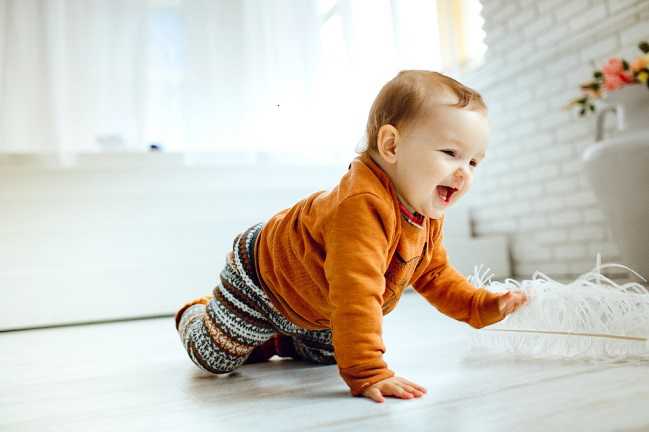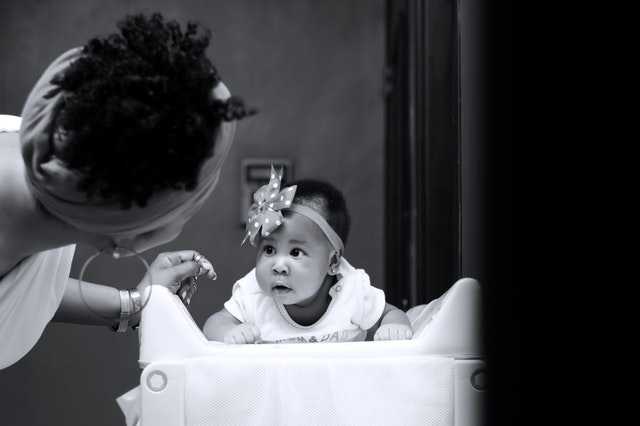When Do Babies Start Crawling and How to Help Them

Baby crawling is a big deal for many parents, and they keep a careful eye on their baby to achieve this stage on time.
Keep in mind that every baby is unique and may show different developmental processes that may be different from what you are used to.
Most times, rolling overcomes before crawling, so keep that in mind.
How to Know When Babies Start to Crawl
Even though some newborns begin rolling over at a young age, they may take a long time to start crawling.
It is possible that some infants will take a little longer to start rolling over, but they will soon catch up. Note that each child is an individual with a uniqueness that is special to the child.
Most babies start rolling over around three to five months of age. As your baby develops, he or she may roll over from their back to their stomach, or vice versa, or they may do a simple half-roll. Your baby's birth is an accomplishment to be proud of, no matter how he rolls.
Safety-wise, once your baby has mastered rolling over, he or she is mobile and can probably reach where they want to go.
They may not be able to stand or crawl, but they will require some babyproofing and cleaning.
You should never leave your kid alone on the changing table. This is true even for kids who have not yet rolled over because you never know when they will.
For this reason, when it comes to changing your baby's diaper, make sure you have all the materials you'll need and that you're always keeping a hand on your baby.

How Babies get started with crawling
'Tummy time' is the first step you will observe in your baby. When your baby lies awake on his or her stomach for monitored periods of time. A baby's neck and shoulder muscles are strengthened by lying on their stomachs.
With the help of their elbows, they learn how to support themselves by holding up their heads and as well as their shoulders.
Crawling requires a lot of power and muscle control, but newborns don't stop there. The following moves may be attempted as infants get stronger:
- Kneeling and rocking back and forth.
- How to do a "plank" by balancing on arms and feet, or on hands and knees.
- Taking the next step (either on the belly or on hands and knees).
- Circular motion (pivoting).
- Alternating between prone and upright positions.
6 Different Babies Crawling Styles
Learning to crawl and move independently with your baby can be one of the most rewarding experiences of your life. Use this time wisely, since before you know it, your child will be pulling himself up, standing, and wandering around on his own.
The following are different crawling styles:
Crawling Style #1: Bottom scooter
The baby scoots about on her bottom using her arms to drive herself ahead.
Crawling Style #2: Classic hands-and-knees or cross crawl
When the infant is on her hands and knees, she moves one arm and the opposing knee forward simultaneously.
Crawling Style #3: Belly or commando crawl
The infant drags her belly against the floor as she pulls her body forward.
Crawling Style #4: Rolling crawl
Her journey to her destination is accomplished by rolling from one location to the next.
Crawling Style #5: Crab crawl
The baby glides backward or sideways like a crab, moving herself with her hands.
Crawling Style #6: Bear crawl
When she walks on her hands and feet like a bear, it looks like she is doing the typical crawl, but her elbows and knees are kept straight.
Top Benefits from Babies Crawling
- When babies crawl, they learn how to use both sides of their bodies equally and strengthen their arms and legs.
- In addition to learning how to coordinate motions from both sides of the body, crawling teaches babies how to utilize their arms and legs together.
- As a result of this, crawling is one of the first motor acts that require babies to activate both sides of their brain simultaneously.
- When newborns crawl, they develop better learning patterns, better visual tracking, and even help with abilities like dressing later in life. A significant foundation of developmental capabilities is laid by crawling.
- The Baby's strength, balance, and coordination will improve as a result of crawling.
5 Easy Ways to Encourage Babies to Start Crawling
#1. Encourage Crawling to Their Favorite Toy
A moving toy, such as a car or wheeled toys, should be placed just out of reach of the baby to encourage them to move towards it. Keep moving the item away from them as they approach closer until they have crawled or crept towards it a few times before you remove it completely. As a reward for their hard work, let them play with the toy.
#2. Use Tummy Time
It is possible for babies to begin doing Tummy Time every day as soon as they arrive home. During tummy time, the baby's muscles in the neck, back, and shoulders are strengthened, preparing them for crawling. Don't forget to give your baby some tummy time during the day, and make sure they sleep on their back.

#3. Teach Your Baby to Rock on Hands and Knees
Learn how to rock back and forth to get the baby used to balance in this position if he or she is already on hands and knees. Music with a rocking beat or a tune like "Row, Row, Row Your Boat" can be played in the background. 
#4. Position Toys Out of Reach
Toys should be placed slightly off the floor, such as on a couch or a play table, as the baby begins to crawl and creep. As a result, babies are more likely to glance up, lift their heads, or get down on their hands and knees in order to get the toy. This prepares them and motivates them to move to get to the toy.
#5. Practice Push-Ups
Parents can demonstrate push-ups by getting down on the floor with their children. After watching you raise your arms, the infant will be able to mimic your movements. Help them by placing a pillow beneath their chest.
We hope you now understand some of the steps babies take to start crawling.
Author Bio
Contributor comprises full-time and freelance writers that form an integral part of the Editorial team of Hubslides working on different stages of content writing and publishing with overall goals of enriching the readers' knowledge through research and publishing of quality content.
Article Comments
No Comments!
At present there are zero comments on this article.
Why not be the first to make a comment?
Similar Articles
Sponsor
Search Articles
Experts Column
Latest Articles
Featured Articles
Most Popular Articles












